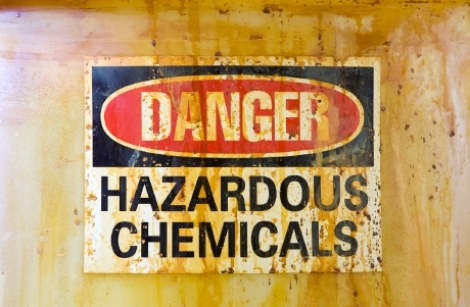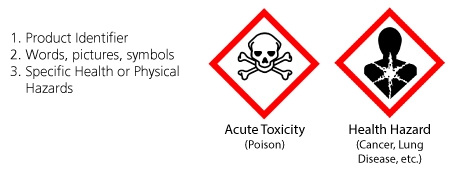The Basics of Secondary Container Labeling

Labeling is required by governing agencies including the Environmental Protection Agency (EPA), the Occupational Safety and Health Administration (OSHA), the Department of Transportation (DOT), and the National Fire Protection Association (NFPA). OSHA and EPA inspect and fine for unlabeled containers.
Container labeling at collision centers is difficult to say the least. Managers, body technicians, painters, and clean up personnel are all affected by the need to label containers. Although labeling sounds simple, it is not easy in a shop work environment to keep containers labeled. Oil, grease, solvents, and cleaners tend to remove labels. A system must be used to insure that facility personnel know what is required and are held responsible to make sure labels are in place.
The regulation gives the employer two choices:
Option 1:
Label the container in accordance with the full standard requirements;

Option 2:
Label the container to provide information concerning the health and physical hazards;

What should you do?
A simple solution is to require that the product supplier provides labeled containers. Even under these circumstances it is important that the label is reviewed to make sure it has significant information regarding the health and physical hazards of their products. For secondary containers, pictures and symbols are not required if physical and health hazard information is provided in an easily understandable manner.
In the situation where labels are not provided by the supplier, the labeling is up to management at the facility. In order to have a successful labeling program the following should be considered:
- Identify the products in each area that are typically not labeled.
- Designate a responsible employee to be in charge of each area.
- Transfer the most important health and physical hazard for each product from the primary container label or by reviewing the Safety Data Sheets for each product. Example: Wire Wheel Cleaner: Corrosive.
- Use the same terminology throughout the dealership including the identifier (common name of product), physical hazard (such as “Flammable”), and the health hazard (such as “Skin Irritation”).
As with many requirements, this sounds burdensome. Please consider that the number of products that are placed in secondary containers can and should be controlled. Once employees know what is required, they need access to indelible pens. The responsible person in each department must know what should be on the containers and inspect them on a regular basis.
This information is hardly all inclusive. It is intended to get you started in developing a labeling plan for your facility. If you’d like additional information on labeling or other regulatory requirements visit the KPA website.

